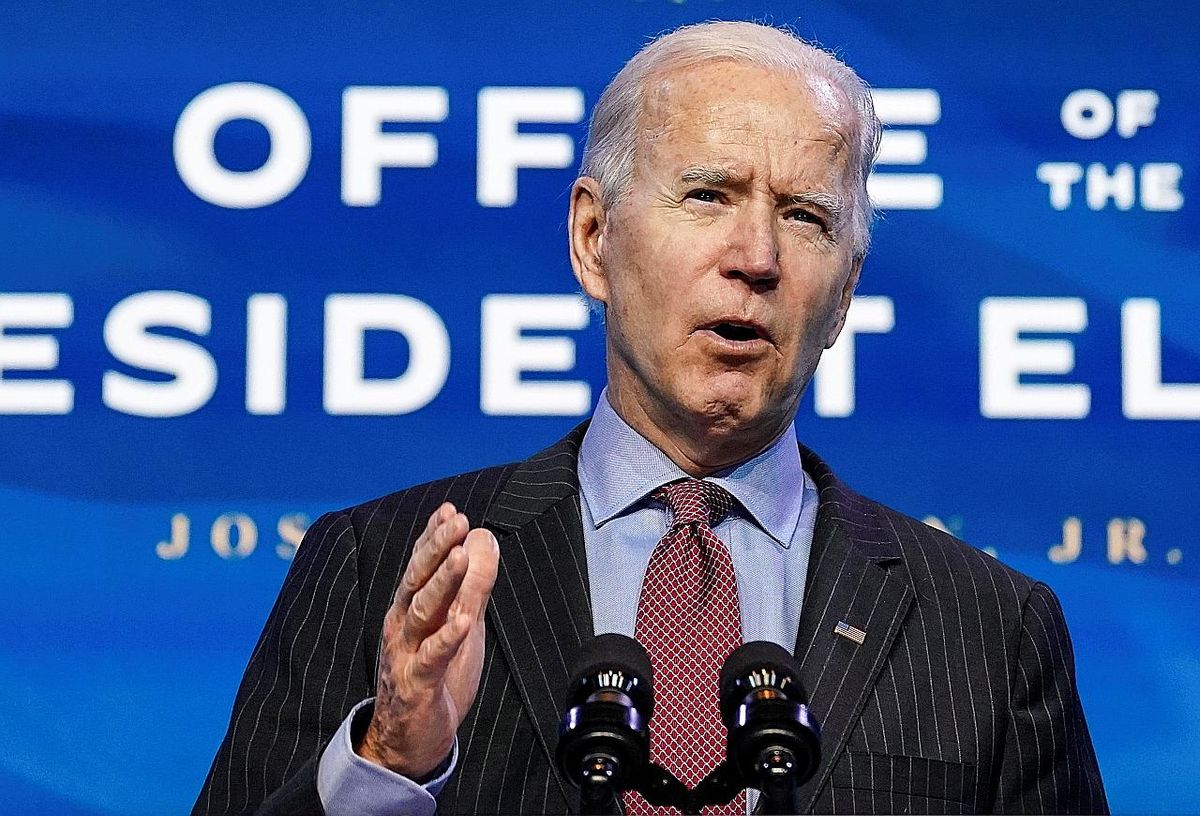What direction will US-China relations take under President Biden?

A few minutes every morning is all you need.
Stay up to date on the world's Headlines and Human Stories. It's fun, it's factual, it's fluff-free.
Under the Biden administration, a different strategy will likely be sought to counter those issues in US-China trade highlighted during the Trump years.
The trade war between the United States and China is likely to be one of the lasting legacies of the Trump administration. Such a legacy should come as no surprise, as then-candidate Trump’s criticism of Chinese trade practices was a key feature of his 2016 presidential campaign.
Yet, after years of tit-for-tat tariffs and sanctions, it appears that the US has lost the economic conflict inaugurated by President Donald Trump.
The US-China trade deficit has not been reduced, US industries and consumers have suffered and the “phase-one” deal agreed on by the US and China in January 2020 has failed to deliver the economic rapprochement promised.
The administration of President-elect Joe Biden will inherit frosty relations with China and a difficult international atmosphere in which to operate.
Biden himself has been critical of China in the past. The president-elect has, like President Trump, criticized China’s trade policies and “abusive practices.” President-elect Biden has highlighted building multilateral action among American allies as the key method through which he will seek to engage China.
But this multilateral action may prove to be more difficult than imagined. Amid domestic turmoil in the US following the results of the 2020 presidential election, China has pressed ahead with solidifying its position in the international system.
In the last few months alone, China has helped deliver the world’s largest-ever trading bloc, the Regional Comprehensive Economic Partnership (RCEP), and has secured a diplomatic coup in its investment agreement with the European Union.
Under the Biden administration, a different strategy will likely be sought to counter those issues in US-China trade highlighted during the Trump years.
Trump’s trade war
A significant feature of Trump’s 2016 presidential campaign was his criticism of US-China trade practices, which he claimed as being central to the loss of US manufacturing.
“We can’t continue to allow China to rape our country, and that’s what we’re doing,” Trump said in May 2016.
Following his victory, Trump’s rhetoric against China evolved into action. Beginning in 2018, the Trump administration began imposing tariffs on hundreds of billions of dollars worth of Chinese imports.
The loss of trade meant that certain US industries needed to be subsidized by the federal government. The Market Facilitation Program provided billions of dollars to American farmers who, before tariffs were enacted, would have exported their goods to China.
In what was hailed as a brief respite to the trade war, the US and China agreed to a phase-one trade deal in January 2020, in which China would commit to purchasing a set amount of US goods.
President Trump hailed the deal as a “momentous step, one that has never been taken before with China toward a future of fair and reciprocal trade with China.”
As the data shows, however, President Trump’s trade war has been anything but successful. The president claimed in 2018 that “trade wars are good and easy to win.”
But under President Trump’s tenure, the US has lost its trade war with China.
The US trade deficit with China remains higher than its 2016 figures, having only decreased on a year-on-year basis once – in 2019 – as a result of US imports shifting from China to neighboring countries such as Vietnam.
Nor has Trump’s trade war succeeded in cutting China’s exports. China’s total shipments have grown every year since Trump took office, most recently as a result of the demand for medical supplies and other necessities during the COVID-19 pandemic.
Despite pressure by the Trump administration, many US companies have continued to conduct business in China, even as sanctions and blacklisting make business operations more uncertain and unstable.
All of this shows that “China is too big and too important to the world economy to think that you can cut it out like a paper doll,” according to Mary Lovely, an economics professor at Syracuse University.
What the Trump administration’s trade war may succeed in achieving, however, is illustrating the path forward for the incoming Biden administration.
Biden’s inheritance
Biden himself has begun to illuminate just what path his China strategy will take.
In an interview with New York Times columnist Thomas Friedman in December, the president-elect said “The best China strategy, I think, is one which gets every one of our — or at least what used to be our — allies on the same page.
“It’s going to be a major priority for me in the opening weeks of my presidency to try to get us back on the same page with our allies.”
But the president-elect has not been shy in criticizing China’s trade practices. In the same interview, Biden also highlighted what he considered to be China’s “abusive practices,” such as “stealing intellectual property, dumping products, illegal subsidies to corporations” as well as forcing “tech transfers” from American companies to their Chinese counterparts.
Biden’s appointees have struck a similar tune. Former Federal Reserve Chair and Treasury Secretary appointee Janet Yellen has argued that the “United States has real issues in terms of its trade relations with China,” though she has disagreed with the methods employed by the Trump administration to resolve these.
For his part, President-elect Biden has said he would not immediately end Trump-era tariffs or overturn the phase-one trade deal, even though China has fallen short of the obligations laid out by that pact.
Instead, Biden has stated that he first wants to “make sure we’re going to fight like hell by investing in America first,” by strengthening US investment, research and development in key industries such as energy, biotechnology, advanced materials and AI to better compete with China.
Multilateral difficulties
But in presenting a multilateral front against China, Biden may face more difficulties than imagined.
China has seized the initiative to cement its international influence and take advantage of the chaos in the US that has stemmed from President Trump’s unprecedented rejection of the election results, resulting in an attempted coup at the US Capitol.
During the interim period between the results of the US election and the inauguration of a new administration on January 20, China came together with 14 other nations in the Asia-Pacific region to form the RECP, the world’s largest-ever trading bloc. China has also secured for itself a breakthrough investment agreement with the EU against the wishes of observers in the US.
By securing these international deals, Beijing is attempting to insulate itself from the likelihood that allies will go along with any Biden plan to put economic pressure on China, betting that other nations will be unwilling to break their lucrative trade relations with China to do so.
Speaking at a study session of the Communist Party School, Chinese President Xi Jinping said that “the world is undergoing profound changes unseen in a century, but time and the situation are in our favor.”
While the Trump administration’s trade war has largely proven to be a failure, its economic conflict with China has revealed one significant Chinese weakness – its technology sector.
In particular, Trump-era sanctions and the blacklisting of specific companies, such as Huawei Technologies Co., Ltd., has exposed China’s weakness in semiconductor chip technology.
Huawei’s business has suffered massively as a result of its loss of access to semiconductor chips, which, crucially, rely on US-made technology, the production of which is often outsourced to manufacturers in Taiwan – a US ally.
It is likely that the Biden administration will take issue with the current nature of US-China relations, but what direction it will seek to take the relationship in has yet to be fully realized.
Have a tip or story? Get in touch with our reporters at tips@themilsource.com




Comments ()